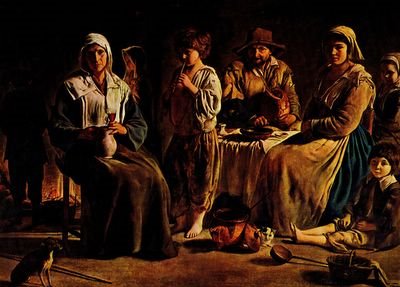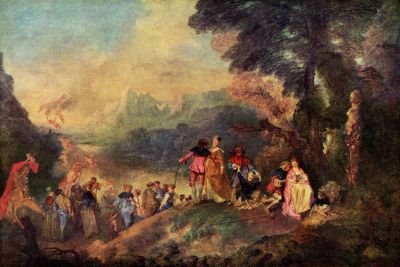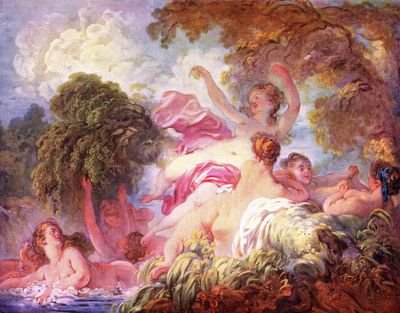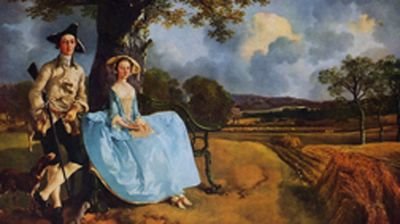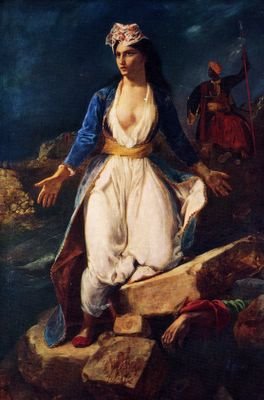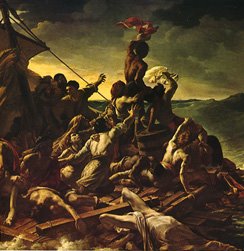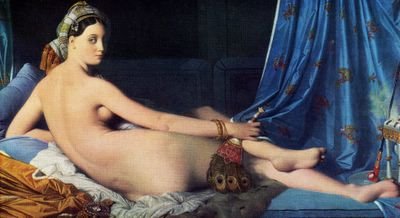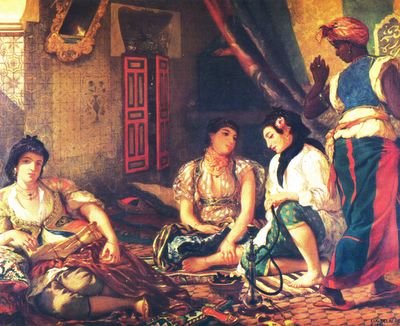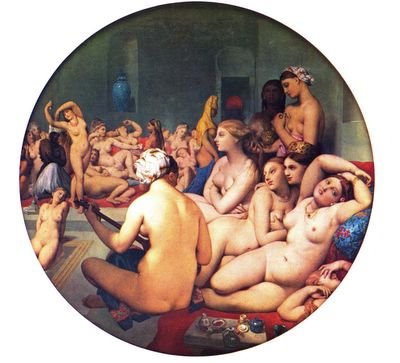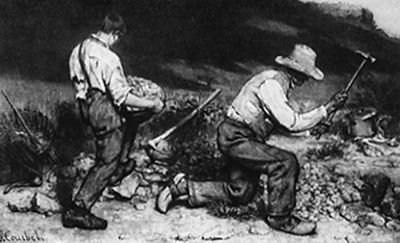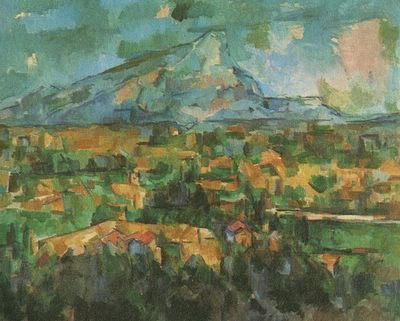Thematic Transformation: New Work Methods of the Classical Composers in the Use of the Motive
Mozart showed himself to be equally at home using the motive as the musical kernel or at composing long, lyrical melodies sometimes found in later Romantic music. The dichotomy has its origins in his history and employment possibilities. Mozart, unlike Haydn and Beethoven, did not focus his energies exclusively upon instrumental music. Mozart also composed opera largely modeled on Italian models. The traditions of beautiful aria melodies still ran deep in Italian opera, and the traits are found in the ‘singing’ quality of many of the melodies that Mozart composed.
Although he composed a single opera, Beethoven intensely focused his energies upon the genres of instrumental music. His efforts were channeled to create pieces of great emotional content and contrast, but also to exploring the boundaries of the tonal system of his time. The later works juxtapose more violently not only thematic ideas, dynamics, tempi, and even meter, but also key areas that neither occurred together regularly in the music of his time but also in the music of the next fifty years!
Thematic Transformation in Mozart’s Music
The three composers discovered that Vivaldi’s construction of thematic materials from a motive suited their musical aims exceptionally well. For one, the motive could evolve or “transform” as the music unfolded, permitting great developmental strides without the sacrifice of the identity or unifying character of the original motive. Below is the principal theme of the first movement of Mozart’s Symphony No.40 in G Minor (K.550). The motive is found as the first three notes.
Principal theme of Symphony no. 40
As the movement unfolds, the basic motive is “transformed” or modified by the omission of the last note (the tenth note of the previous example):
Transformation by omission of the last note of the theme
Later, the theme is further transformed by inversion:
Transformation by inversion
Thematic Transformation in Beethoven and Unification of Multi-movement Works: Symphony No.5 in C Minor, First Movement
The thematic transformation found in this late work of Mozart only anticipates the extensive treatment applied to the motive by Beethoven. In an example of the kind of thinking that puts him in a class apart and in a role the formal bridge to the Romantic period, Beethoven not only uses the motive as the material of the first movement of Symphony No.5 in C Minor, but as the bases for all the movements of the work! The initial kernel, often described as “Fate knocking at the door,” is given below as the first four notes. The second four-note set is a sequence, and the presentation of a motivic idea and its immdediate sequence, exemplified here, later become an almost standard feature of the expositions of subsequent movements:
Nuclear motive of the first movement, the "Fate Theme" (first four notes)
Beethoven immediately uses his four-note motive as the basis for the melody. The repetition of an idea at different pitch levels is called sequence:
Fate motive used in sequence to create first extended melody
Beethoven expands the motive at the end of this first melody. The resulting figure is known as the “Horn Call” and is appropriately presented by the French horns:
Fate motive expanded into "Horn Call"
As he presents the second theme, the Fate motive does not remain silent but now serves inverted in the role of accompaniment. Moreover, this second, lyrical theme is not devoid of the influence of the Fate motive or the Horn Call in its construction. The final notes of the Horn Call are disguised in the new, lyrical theme as the second, fifth, and last notes of the melody. The basic intervals of the Fate motive are also found as the second, fourth, and sixth notes.
Second, lyrical theme supported in lower voice by "Fate" motive
The triumphant melody that follows later does not seem to bear melodic or intervallic similitude to any of the previous motives. It does feature from the second to the fifth note (first note of the third measure; the tie connecting the first two notes is not counted), however, the same rhythm, albeit much quicker, as the Fate motive. From the third measure, the melody is distinctly heard in four-note patterns that echo the rhythm of the Fate motive.
Moreover, the interval of the third descending, the principal interval of the Fate motive abounds as a structural feature. It is found between the first and sixth notes, the second and fourth notes, the first notes of the third and fifth measures, the first notes of the fifth and sixth measures, and as the last two notes in measures 5-7 The An altered Fate motive is also clear in measures 5-7. Here the first two notes of each measure, if changed to the same note as the third one, would yield the original Fate motive. The relationship of the theme to the original motive is not apparent without scrutiny on paper, but it does resonate in the listener at a subconsicous level.
Triumphant theme with opening Fate-motive rhythm and descending third intervals derived from it
Beethoven further transforms his motives in the opening of the development, which opens with the Horn Call. The idea of the descending third interval is used to create the accompaniment, and the basic Fate motive is given in the soprano in inversion and missing the first note and then in an uninverted form, still missing the the first note, in the last six notes of the example.
Opening of Development: Horn Call, descending third intervals, and shortened Fate motive
Within seconds, Beethoven introduces the Horn Call again, building the subsequent section upon the first and second of the three notes he initially added to the Fate motive to create the Horn Call. By the last four measures, he has inverted the interval of the ascending second to a descending second given between the upper and lower instruments of the orchestra. For example, the highest notes in the fourth and third last measures are B flat and A flat, but the second note, A flat, is given a full octave higher. The section is one in which the direction of the music, and even the music itself, seems to be in a state of suspension. It is a section of suspense, as well, and serves very nicely to add to effect of forward drive in the section that follows.
Motive spun from first and second long notes of Horn Call
Beethoven again uses the Horn Call to open the coda:
Opening of coda
In a fashion typical of his forward-looking approach, he introduces a rising new thematic idea. The idea is not new, however, but yet another idea derived from earlier motivic and thematic materials. The new theme consists of four-note groups that are sequenced in each instance one pitch higher. The are each bounded by a third, and the contour is not dissimilar to the three notes Beethoven added to the Fate motive to make the Horn Call, when regarded inverted and in retrograde (backward and upside down). A similar contour is also found between the second and fifth notes of the lyrical theme above.
New coda theme
Thematic Transformation and Unification Carried from the First Movement into the Second, Third and Fourth Movements of Symphony No.5 in C Minor
The second movement of the symphony also derives its thematic ideas from the basic Fate kernel. The movement is a theme-and-variation form and again, thinking beyond the constraints of tradition, Beethoven imbues the movement with two themes! The first features the sequencing seen earlier in lyric theme of the coda to the first movement, where we now recognize it was given as a preview of themes to follow. The basic kernel is found in the first, second, and last note of the first full measure and the first note of the second. It is the Fate motive again, but with the interval at the end expanded to a fifth as in the first statement of the Horn Call in the first movement. The second, third, fourth, and fifth notes of the first full measure also give the lyric coda theme in retrograde (backward)!

First theme of second movement
The second theme is more obvious. The Fate kernel is found as the first full measure and the first note of the second. Here the motive is inverted and the third note is moved upward one note. Again, the sequencing of the lyric coda theme, and the first theme of the movement is evident. Moreover, if one moves the first note of the first full measure up to the C note (up two notes), the motive is the same as the coda theme!

Second theme of second movement
The principal notes of the first theme are evident in Variation A1 and in Variation A2:

Variation A1

Variation A2
The third movement, the Scherzo or “joke,” begins with a theme that derives its contour less from the Fate motive and more from the accompaniment found supporting the Horn Call in the first measures of the development in the first movement. The accompaniment here anticipates the first notes and contours of both themes of the second movement. The first notes of each contain the same intervals, and the theme of the third movement simply continues the expansion by thirds. The short-short-short-long Fate motive rhythm is found in the second and third measures.

First theme of the third movement
The second theme strongly echoes the Fate kernel, not in its intervallic structure but in its rhythm. Upon hearing, the reference to the first notes of the work is too strong to miss and creates a direct, unifying link to the beginning of the symphony..

Second theme of the third movement
The fugue subject of the second section of the third movement apparently owes the least to the basic motive. The opening of the subject derives from the last three notes of the Horn Call found as the first, third and fifth notes of the first full measure. The rhythmic organization of the same measure into two groups of three rhythmically resembles the Fate motive stated twice but each time denied its last note. The remaining music of the line resemble the melodic contours of the passaggi (runs) found in the variations in the second movement. The final measures hark back to the accompaniment of the Horn Call in the development of the first movement.

Fugue theme of the third movement
Yet another striking progressive element is found between the third and fourth movements. Instead of bringing the third movement to a close, Beethoven connects the two with a dark, low, mysterious filament in the tympani and sustained low strings. Over this static background Beethoven reaffirms his commitment to motivic construction by sequencing a fragment of the scherzo theme, the first theme of the third movement, at ever higher pitch levels.
The first theme of the final movement draws from the outline of the chord, that is, stacked third intervals. Here the scope of the initial descending third interval is inverted and expanded outward to form a complete tonic chord. Moreover, the sense of triumph and fulfillment is enhanced by the tonal motion from the partially stated tonic minor chord in the first four notes of the work to the statement of a complete major tonic triad as the first theme of the final movement.
The rhythm of the first three notes of this theme replicate the rhythm of the first three notes of the Fate motive, but at a far slower pace. Another modified version of the Fate rhythm is given in the dotted figures of the fourth and fifth measures. The rhythm here is created by omitting the second note of the Fate motive. Notice the familiar countour of the melodies of the third measure and ending measures of the example. We have seen it in the Triumphant theme and the coda theme of the first movement as well as echoed in figures throughout all the movements. Of interest is also a special feature, unrelated to earlier motives, found in the first four measures. The theme is a palandrome. A paladrome is a word or musical idea that is the same backward as forward. Examples include the word "racecar" or the name "Otto."

First theme of the fourth movement
Like the first three notes of the first theme of this movement, the “bridge” or transition theme also outlines the tonic triad. The first three notes of the transition are an inverted contour form of the last three notes of the Horn Call. The modified Fate rhythm is present in the dotted figures. Here then, Beethoven has taken an idea derived from the first part of the Fate motive and Horn Call, a contour derived from the last three notes of the Horn Call, and reversed them in order!
The strong motion from the first beat of one measure to the first beat of the next is also reminiscent of the Fate rhythm. The relationship becomes apparent if one sings the rhythm but adds the missing b=middle beat. The two dotted half notes and the tied whole note, when viewed in retrograde, are also a variant of the three notes Beethoven added to the Fate motive to form the Horn Call! Here he is thinking on a very advanced level, and again has created an abstract (but not literal) palandrone!
The theme, which fills the first three measures, is sequenced immediately, drawing a strong relationship to the sequencing found in the Fate motive and both themes of the second movement.

"Bridge" or transition theme of the fourth movement
The second theme is given in triplets, another variant of the Fate motive rhythm, yet the rhythm is also present at another level. A modified form of the Fate rhythm is found given in the relationship of quarter notes that end each triplet. The two phrases are seperated by the dotted half note. In the first phrase, the first note of the Fate motive rhythm is missing; the complete rhythm is present in the second phrase. Moreover, the descending intervallic that finishes each phrase is reminiscent of both the initial Fate motive and the Horn Call.

Second theme of the fourth movement
The intervallic boundaries of the final theme are derivative from the Fate motive but expanded from the interval of a third to the interval of a fourth. The last three notes of the new theme in the second measure are clearly one final reference to the Fate motive rhythm. They are clearly more powerful because they are heard as more final. If one sings the second measure and the first note of the third, he will hear that the theme is not only finished, but the very question presented in the first three notes of the symphony, the Fate motive, is resolved. The Fate motive was dark and imposing because it was given in the minor key and propelled forward by a very aggresive rhythm. Here the tension has lightened by the use of the major key, and the opening rhythmic motive has a final, convincing closing resolution. As in the preceding movements, the motive is immediately sequenced.
The movement unfolds from the theme, and this sense of conclusion or resolution pervades it. The sense of resloution comes from the music's "pastoral" but noble quality. Throughout, we sense that all is well in the world, and that the world is a wonderful, gentle, happy place. For Beethoven, this musical depiction is the embodiment of the implementation of the Rights of Man and the triumph of man's innate goodness, all foretold as destiny by the very first statement of the Fate motive at the beginning of the work.

Closing theme of the fourth movement
Some of Beethoven’s thematic transformations are readily apparent. Others are more abstract. The process by which Beethoven could fashion four different, independent movements from materials derived from a single motive, hence relating them as a larger whole, is testimony to a musical intelligence advanced beyond his time. Few composers and music critics actually understood his late works until more than thirty years after his death! This analysis of the thematic material of Symphony No.5 in C Minor only scratches the surface of Beethoven’s genius but does give a small indication of how he earned his place among the greatest of Western composers



